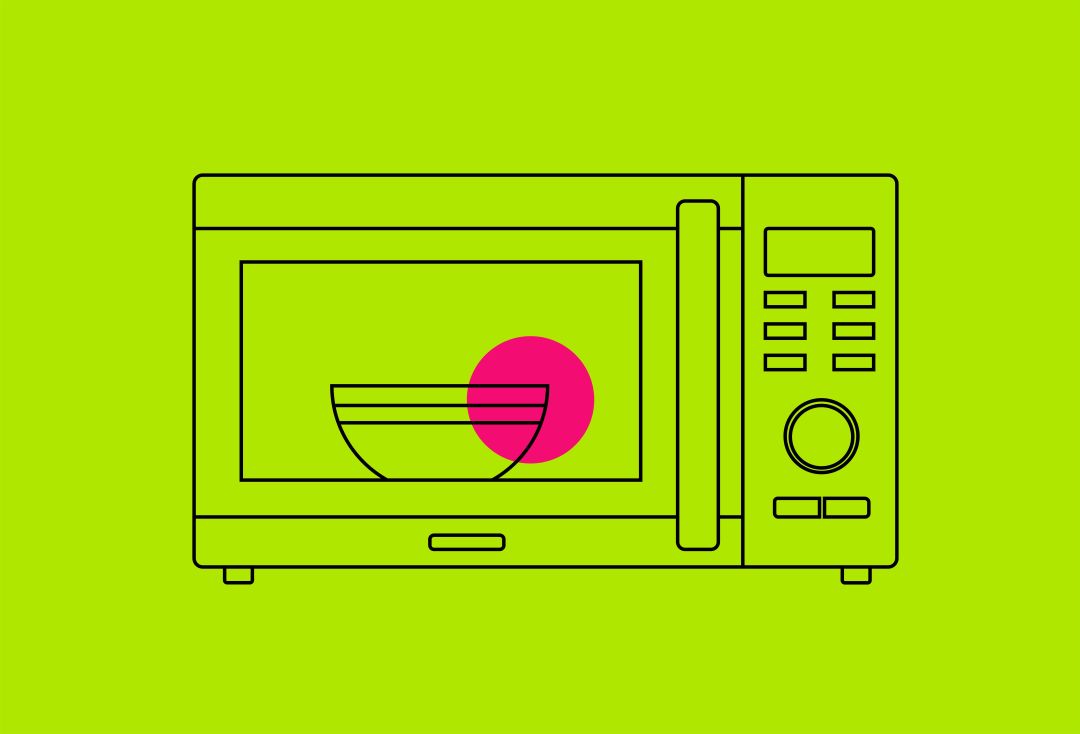Is it Safe to Reheat Those Holiday Leftovers in the Microwave?

Image: Kari Perrin
Ah, the microwave. It's an invention we all know and love and, for some of us, something we couldn't live without. This modern-day convenience uses high powered lights to heat food in minutes, and brings those delicious holiday leftovers back to life. Seriously, what's a holiday feast without meals for days after?
Americans have been "nuking" their food for more than 50 years, when the first domestic microwave oven was sold in 1955. Before that, it was an oversized invention used during World War II to improve Britain's radar system in spotting warplanes.
One day, an engineer by the name of Percy LeBaron Spencer thought, "Hey, this is high powered heat. Let's try cooking food in it!" He tried popping popcorn and making an egg with the microwave, called a magnetron at the time, and it worked.
Fast forward to 1970 and "microwave oven" became the words on every American's lips. More than 40,000 units were sold in that year alone. Now, microwaves are the compact and user-friendly gadgets we know and love, not the size of refrigerators, like the first one was.
That said, are microwaves even safe to use on food? Are we losing nutrients from our turkey dinners and holiday ham in the cooking process? Doctors at Harvard Health have answers. We have reheating tips.
How do microwaves work?
Microwaves cook with energy like radio waves, but the light waves are shorter. The waves only affect water and molecules that are electrically asymmetrical, according to Harvard Health. The microwave's energy causes these molecules to vibrate and quickly build up heat.
Are they safe?
The Food and Drug Administration regulates microwave safety and keeps those regulations updated yearly. It states that microwaves are generally safe when used correctly—in other words, don't put aluminum foil or metal up in there).
As far as health goes, "microwave cooking is actually one of the least likely forms of cooking to damage nutrients," says Dr. Anthony Komaroff, the Harvard Health Letter's Editor in Chief.
No matter the heating method, nutrients in food break down because of the heat. However, because microwave cooking times are shorter, they do a better job of preserving vitamins like C, the vitamin that breaks down quickest, and other nutrients that typically break down when heated.
Steaming vegetables in the microwave may also be healthier than boiling them because nutrients tend to leak out into cooking water. But for foods like raw meat, its best to oven cook or pan fry. Use the microwave solely for defrosting and reheating.
So, what's the best way to microwave our holiday leftovers?
Cook in 30-second to one-minute intervals. Stir liquids like gravy and turn over solids, liked baked potatoes, for even reheating throughout the entire meal.
Add a bit of sauce, water or stock to your meal to keep it from drying out. If you have leftover mashed potatoes or mac 'n' cheese from Thanksgiving, consider adding some milk before popping in the microwave to keep them moist.
Cover your plate with a damp towel. This will help keep food from from drying out and keep your microwave mess-free.
Transfer food to microwave-safe dishes. The USDA recommends staying away from paper bags, which can contain glue that will melt, and takeout plastic containers. And of course, no metals. Your best bet is a ceramic or glass dish, maybe even the one you cooked that casserole in the first time around.



